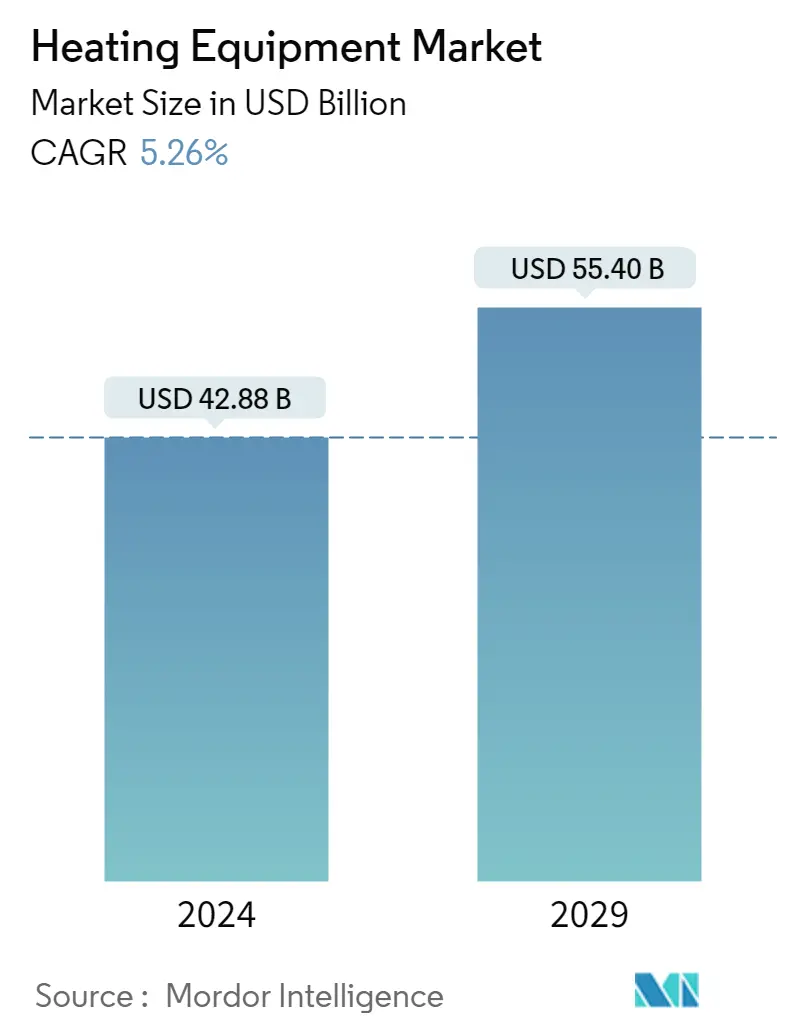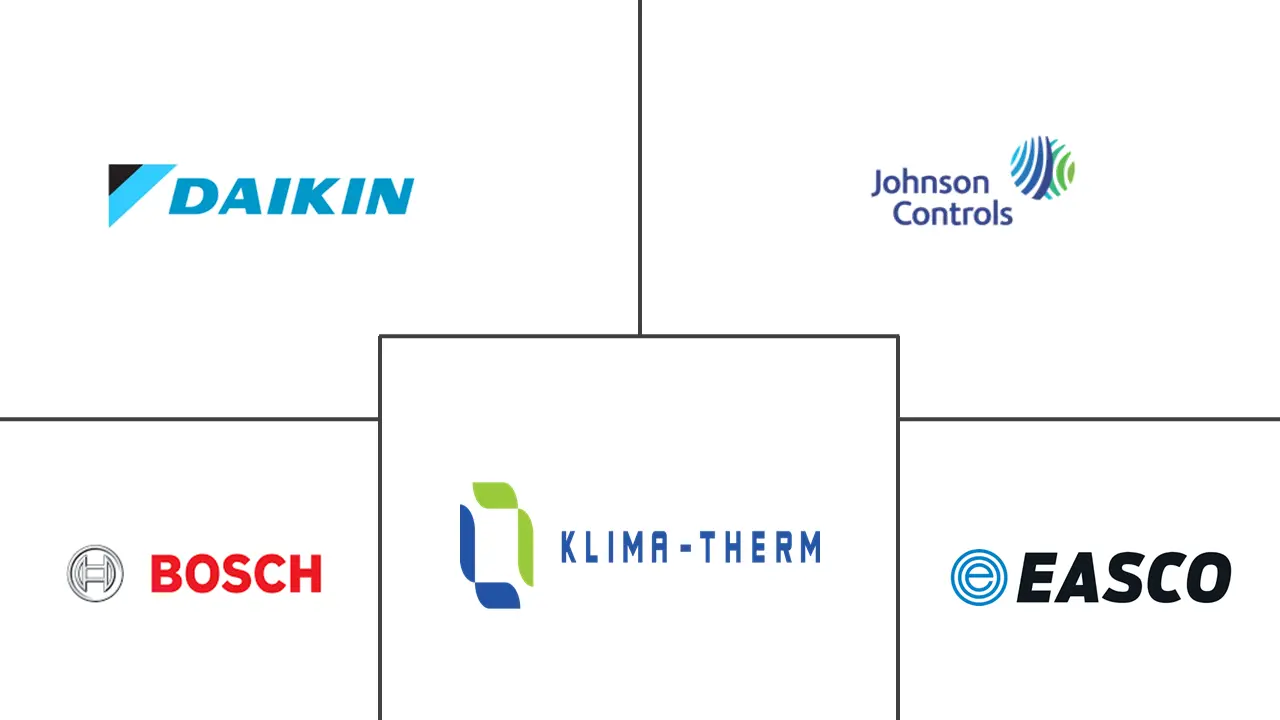Market Size of Heating Equipment Industry

| Study Period | 2019 - 2029 |
| Market Size (2024) | USD 42.88 Billion |
| Market Size (2029) | USD 55.40 Billion |
| CAGR (2024 - 2029) | 5.26 % |
| Fastest Growing Market | Asia-Pacific |
| Largest Market | North America |
Major Players
*Disclaimer: Major Players sorted in no particular order |
Need a report that reflects how COVID-19 has impacted this market and its growth?
Heating Equipment Market Analysis
The Heating Equipment Market size is estimated at USD 42.88 billion in 2024, and is expected to reach USD 55.40 billion by 2029, growing at a CAGR of 5.26% during the forecast period (2024-2029).
The requirement for energy-efficient heating equipment has resulted in the development of mechanical devices that can deliver cost-effective heating, assisting the market's expansion. With quick technological advancement, heating equipment provides cost-effective choices for lowering carbon emissions, boosting the heating equipment market forward. These systems are classified as either self-contained packages of units or core systems.
- Significant expansion in the global construction industry is one of the important reasons driving the market's favorable outlook. Furthermore, the growing need for energy-efficient heating systems is propelling market expansion. Heating equipment is extensively utilized in places with freezing temperatures to raise ambient temperatures with low environmental impact. Technological breakthroughs, like integrating linked devices with the Internet of Things and artificial intelligence, are also driving growth. These technologies allow users to regulate heating equipment remotely via smartphones and wearable devices. Product developers are also creating new and self-contained heating equipment units for residential and small business complexes.
- The rapidly expanding petrochemical and chemical industries in developing nations such as India and China are expected to increase demand for industrial boilers. The market demand is likely to climb further due to increased investment in mega power projects worldwide. These vessels are frequently employed in the chemical and petrochemical sectors, which account for the majority of industrial boilers in this application area. According to the US Environmental Protection Agency, new boiler restrictions are intended to reduce environmental emissions on a massive scale. Currently, more than 88 percent of significant source boilers can fulfill emission regulations with annual tune-ups, but the remaining 12.0 percent will require refurbishment or replacement to reduce harmful emissions, which is expected to offer opportunities for manufacturers throughout the forecast period.
- The growing demand for energy-efficient devices has been driving the deployment of technology, such as heat pumps, to provide end users with significant potential to contribute to renewable energy and climate targets across various regions in the world. The ability of the heat pump to provide a synergy between the decarbonization on the supply side and the technology on the demand side is being exploited to make a significant contribution to reducing the emission of CO2. Heat pumps, being a versatile technology, can provide space heating, cooling, and warm water, all from one integrated unit, thus, providing energy efficiency. Furthermore, these devices can be used in conventional/hybrid renewable systems and accumulate surplus electricity with the help of active thermal mass elements. They are also known to integrate and optimize the performance of various energy resources in the electricity grid.
- On the flip side, governments in developed countries have enacted stringent emission requirements to control pollutants discharged into the environment, influencing heating equipment efficiency, operating costs, and market growth. According to the Environmental Protection Agency, the United States government has established rules for controlling particulate matter, sulfur dioxide, and nitrogen oxide emissions from industrial boilers. Furthermore, the International Energy Agency encourages the usage of technology such as selective catalytic reduction (SCR), flue gas desulfurization (FGD), and fabric filters to reduce emissions from industrial boilers through its Clean Energy Technology Programme. Furthermore, one of the significant issues that industrial boiler manufacturers confront is the necessity to enhance efficiency and steam quality to meet market demand. Such stringent regulations could hinder the market's growth in the short run.
- The construction industry is often considered a key indicator of a country's economic development, and therefore, fluctuations in macroeconomic indicators such as GDP growth, inflation, interest rates, and government spending can have a direct impact on the construction industry. Factors like rising raw material costs due to inflation, higher interest rates leading to less borrowing by builders are anticipated to negatively impact the growth of the studied market during the forecast period.
